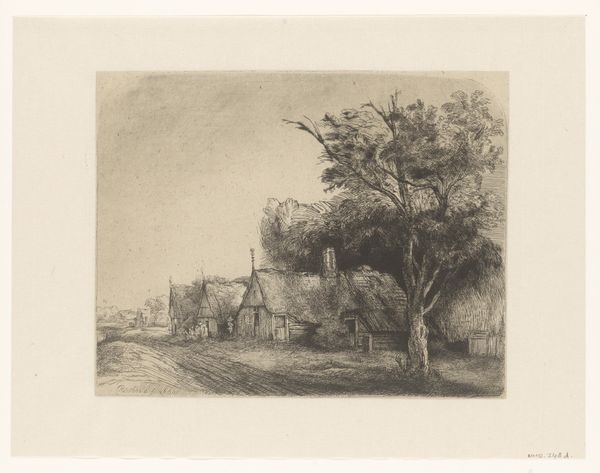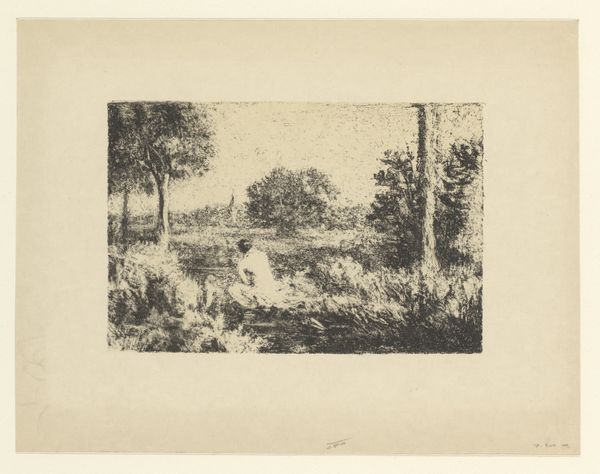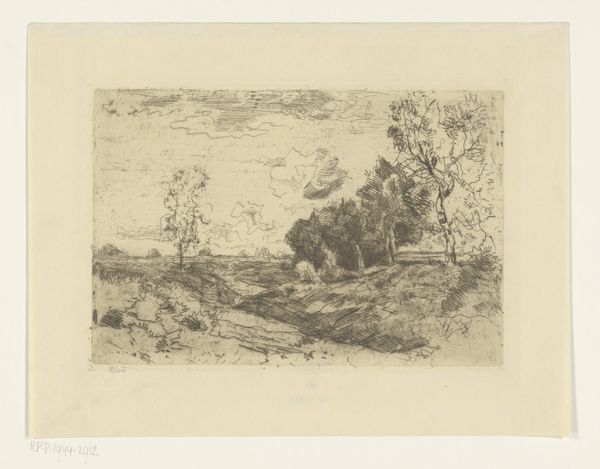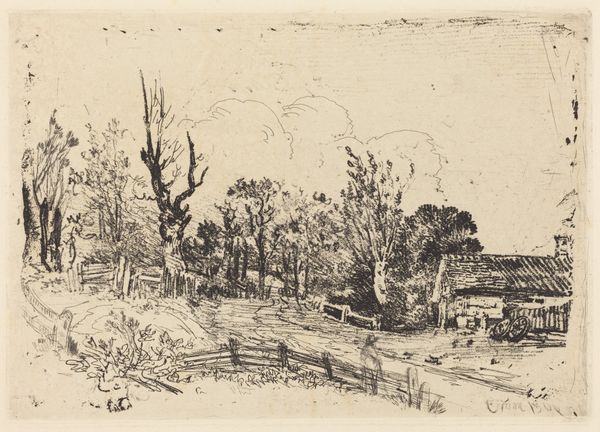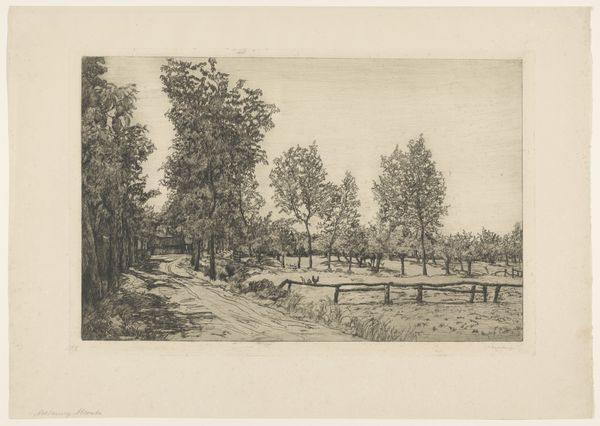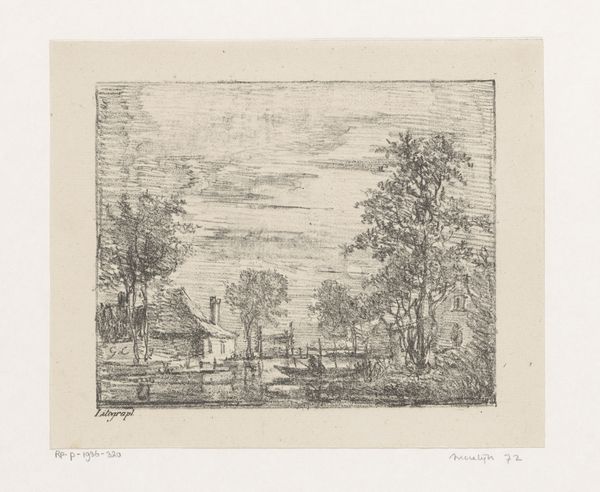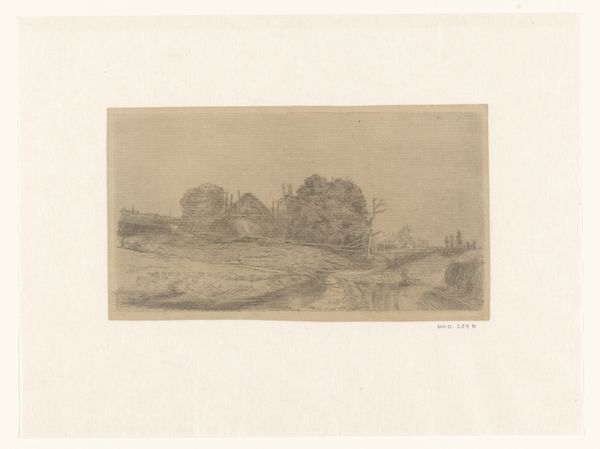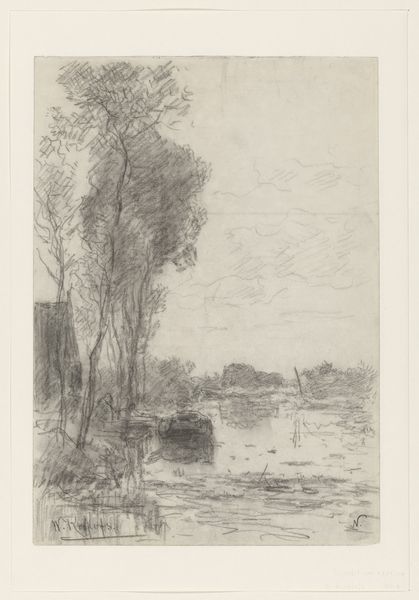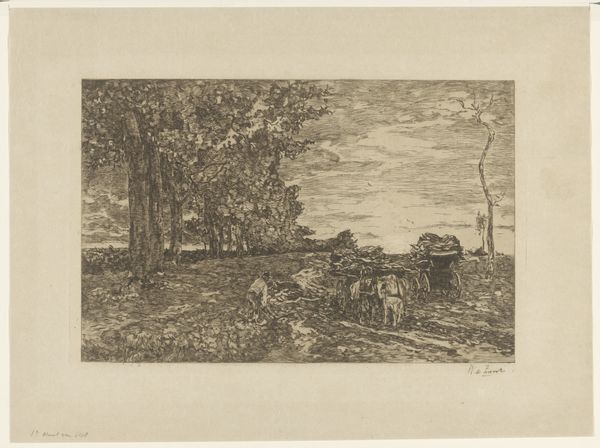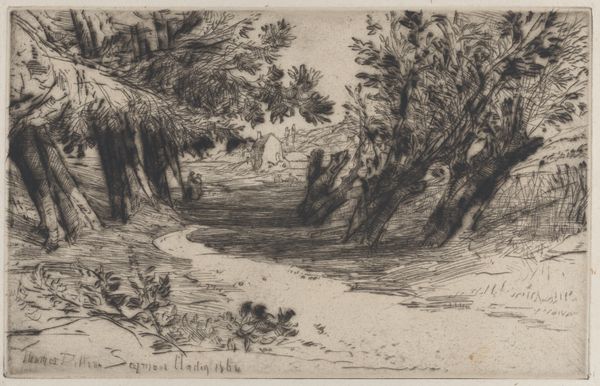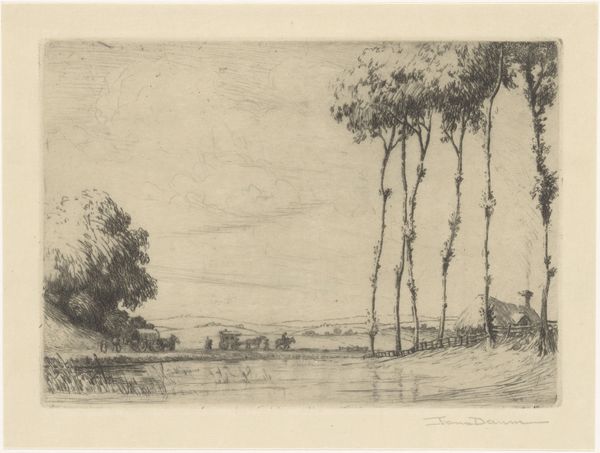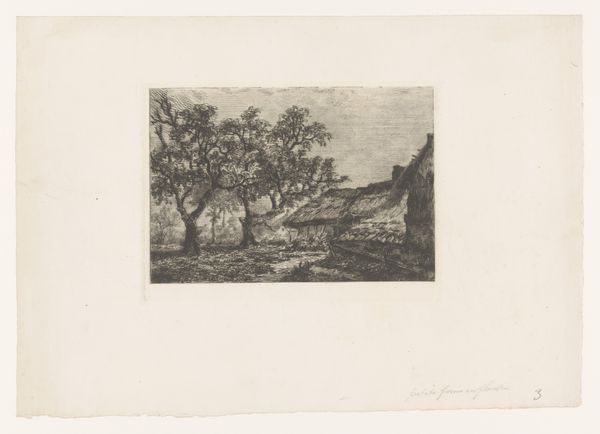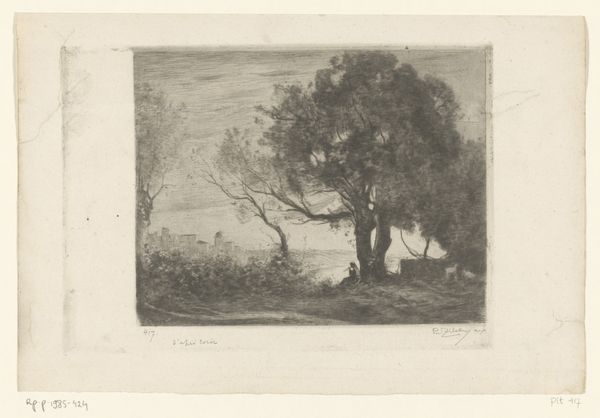
print, etching
# print
#
etching
#
landscape
#
line
#
realism
Dimensions: height 172 mm, width 207 mm
Copyright: Rijks Museum: Open Domain
Editor: We’re looking at "Landschap met huis aan het water" by Gaston de Latenay, created sometime between 1759 and 1859. It’s an etching, and it feels very still, almost frozen in time. What social commentary do you see in this quiet depiction of a house by the water? Curator: I see a negotiation between romanticizing rural life and documenting its realities. Consider the period. Etchings like this circulated widely, shaping perceptions of the countryside for urban audiences, many of whom were experiencing the throes of industrialization and the alienation of modernity. To what extent is this nostalgia, and to what extent is it a depiction of the lives of those who were experiencing an agrarian society on the brink of enormous upheaval? Editor: So, the simplicity is potentially charged with deeper meaning? What about the absence of vibrant color, limiting it to just lines? Curator: Precisely. The medium itself – etching – is interesting. It’s a technique that allowed for mass production, making art accessible to a wider audience but it’s also about control, sharp lines allowing for precision in how landscapes were perceived. Think about who controlled those narratives and whose stories were amplified through that lens. Whose realities were centered? Who did that serve, and what power relations did it reify? Editor: I never thought of landscape art having a point of view, so to speak. Curator: Landscape is never just landscape. The artist’s decisions become interventions. Who is welcome in this "scape," who is kept out, who owns this space, how do we find community in natural settings, and how do we access what should be a birthright? Editor: This makes me see the piece so differently, thank you! Curator: Likewise. I’ll be contemplating whose landscape hasn't been centered.
Comments
No comments
Be the first to comment and join the conversation on the ultimate creative platform.
